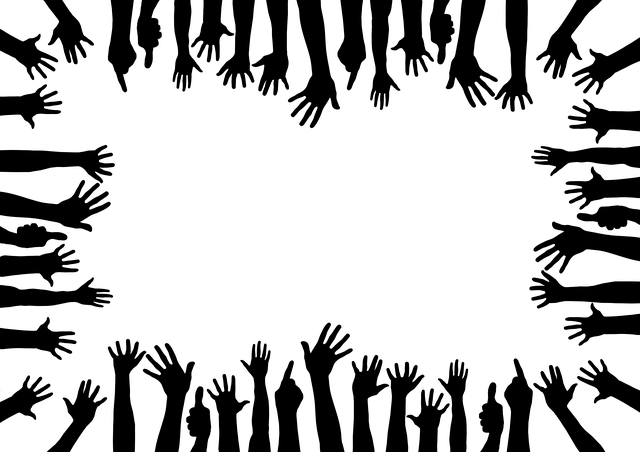
What makes an individual vulnerable to the risks of drinking alcohol? The answer is complicated. Many factors contribute to increased risk of alcohol use disorder harm, including individual, social and environmental factors (Stone et al, 2012). Thus, there is increasing popularity for harm-reduction interventions that aim to address multiple causes of alcohol use disorder.
Whole of community approaches aim to do this across multiple community settings. They are defined as a range of intervention strategies implemented simultaneously across a community (Czech et al, 2010). They are most often delivered in a small city or community with the aim of addressing the interaction between individual behaviour and broader societal influences (Trickett et al, 2011). Usually a team consisting of community members, leaders and stakeholders is set up in existing settings and services within the community and each incorporate different strategies to reduce harms from alcohol use disorder. Examples of such interventions are media campaigns, enforced serving restrictions and increased police visibility.
The current review provided a synthesis of evidence examining the effectiveness of whole-community based interventions in reducing population-level harms from alcohol use disorder.

Whole of community approaches aim to address multiple causes of alcohol use disorder.
Methods
The reviewers searched 5 databases (CENTRAL, Embase, Medline, Medline in Process and PsycINFO). After screening 10,112 publications, 63 publications with 24 individual trials were included.
Results
Most trials were cluster randomised and targeted alcohol use disorder in young people.
If there was a significant amount of homogenous data, meta-analysis was carried out. Where meta-analysis was not possible, outcomes were synthesised narratively.
Risk of bias was assessed using the Cochrane Collaboration Effective Practice and Organisation of Care (EPOC) tool.
Intervention strategies
Intervention strategies were classified into four main categories:
- Community engagement and coordination strategies (community events, mass media)
- Demand reduction and skills based strategies (provision of educational material, implementation of school curriculum, inclusion of parent training, workplace training)
- Harm detection and reduction strategies (screening and interventions, law enforcement)
- Supply reduction strategies (responsible beverage service training, legislative and policy changes)
Outcomes
Study outcomes were summarised into three categories:
1. Alcohol use disorder consumption
- Meta-analysis of three studies showed a significant reduction in prevalence of risky drinking in the intervention compared to control communities
- Past month use of alcohol: meta-analysis of five trials indicated no significant differences between intervention and control communities. Out of the four trials not in the meta-analysis, two studies had greater reductions in the intervention group and two studies showed no significant differences
- Prevalence of recent binge drinking: meta-analysis of five studies showed no differences between intervention and control. One out of four trials not included in the meta-analysis showed a reduction in binge drinking in the intervention group
- Alcohol quantity: out of seven trials, three found a significant reduction in alcohol quantity in the intervention group, two found no significant change and two did not report on this
- 12 month use of illicit drugs: meta-analysis of two studies showed no significant differences in marijuana use. Two studies had significant reductions in methamphetamine and one found reductions in inhalant use
- There were no significant differences between interventions groups and control for 12 month use of alcohol and alcohol frequency.
2. Crime
- Assaults: two out of five studies showed declines in assaults in the intervention group, but three found no significant differences
- Arrests: one study found a decrease in arrests in the intervention group in two out of three communities. Another study found no significant change
- There were no significant differences in delinquency and alcohol related crime.
3. Accidents, injuries and hospital admissions
- Motor vehicle accidents: two out of three trials reported significant declines in the intervention group
- Hospital admissions: one of three trials reported a significant reduction in hospital admissions.

Overall, community interventions had little impact on the harms caused by alcohol use disorder.
Conclusions
Overall, interventions had little impact on the prevalence of alcohol use disorder harm. Although some studies showed evidence of reduction in risky drinking behaviours, most studies had a high risk of bias and were not suitable for meta-analysis.
Strengths and limitations
This review synthesised a large and diverse set of studies investigating the impact of whole of community interventions on alcohol use disorder harms. The reviewers followed Cochrane guidelines for data extraction and assessing the risk of bias. The methodological method used is appropriate given the high heterogeneity of studies in the review; studies which were often non-randomised and measured multiple outcomes. In most cases meta-analysis could not be carried out and in the cases where it was possible this was on a small number of studies (in one case only two), which makes an overall conclusion difficult to draw.
As well as high heterogeneity in the outcomes and interventions reported in the included studies, the included studies also span a large time period (with the earliest in 1994 and most recent in 2017) and a variety of countries (i.e. Australia, South Africa, Sri Lanka). Drinking patterns and guidelines do not only change significantly over time (Smith & Foxcroft, 2009), but also vary widely from country to country (Kalinowski & Humphreys, 2016; WHO, 2014), making it harder to generalise findings.
In addition, and as highlighted by the authors, the majority of participants in the study were teenagers and young people (70%). Younger individuals are more vulnerable to alcohol related harm and an early initiation of use can predict abuse at later ages (Sartor et al, 2007), therefore it is important to identify and target risky drinking patterns at a young age. Findings suggest interventions used in these studies were often not effective in changing behaviour in this population, suggesting we may want to look to other methods for young drinkers. For example, influences such as alcohol availability and parental drinking are described in previous Mental Elf blogs as key targets for behaviour change in adolescents (Clarke, 2017; Tomlin, 2011). It may be that community interventions show more promise in different populations, such as older riskier drinkers. In fact, the review highlights that in specific at-risk populations (i.e. men in rural Sri Lankan villages) the community approach was more beneficial.
Young people are vulnerable to alcohol related harm, but alternative methods may be needed for behaviour change.
Implications for practice
This review suggests whole of community interventions are limited in their effectiveness in reducing alcohol use disorder harms at a population-level. One concern with such complex interventions is the lack of standardised outcomes and measures. The reviewers suggest that future studies in this area should aim to report consistently for ease of data synthesis.
This review highlights that strategies with a weak evidence base are often used in community based interventions (i.e. education, mass media). Alternative population approaches may have a greater impact on behaviour and be more cost-effective. For instance, the reviewers highlight there should be greater emphasis on the regulation of marketing and physical availability of alcohol. A combination of efforts, each with an effective evidence base, are required to result in long term changes in drinking behaviour.

A combination of efforts, each with an effective evidence base, are required to result in long term changes in drinking behaviour.
Conflicts of interest
None
Links
Primary paper
Stockings, E., Bartlem, K., Hall, A., Hodder, R., Gilligan, C., Wiggers, J., Sherker, S., and Wolfenden, L. (2018) Whole of Community interventions to reduce population level harms arising from alcohol and other drug use: systematic review and meta-analysis. Addiction, 5: 274-286 [Abstract]
Other references
Clarke, N. Parenting factors associated with adolescent alcohol misuse. The Mental Elf, 26th July 2017
Czech, S., Shakeshaft, A.P., Breen, C. et al. (2010) Whole-of-community approaches to reducing alcohol-related harm: What do communities think? J Public Health, 18: 543. [abstract]
Kalinowski, A., and Humphreys, K. (2016) Governmental standard drink definitions and low‐risk alcohol consumption guidelines in 37 countries. Addiction, 111: 1293–1298. [abstract]
Sartor, C. E., Lynskey, M. T., Heath, A. C., Jacob, T. and True, W. (2007), The role of childhood risk factors in initiation of alcohol use and progression to alcohol dependence. Addiction, 102: 216-225. [abstract]
Smith & Foxcroft (2009) Drinking in the UK: an exploration of trends (PDF).
Stone A. L., Becker L. G., Huber A. M., Catalano R. F. (2012) Review of risk and protective factors of substance use and problem use in emerging adulthood, Addictive Behaviors, 37: 747-775 [abstract]
Tomlin, A. Survey of teenage alcohol consumption: levels, patterns and influences. The Mental Elf. 17th June 2011
Trickett E. J., Beehler S., Deutsch C., Green L. W., Hawe P., Mcleroy K. et al. (2011) Advancing the science of community-level interventions, American Journal of Public Health,101: 1410-1419. [abstract]
WHO (2014) Global status report on alcohol and health 2014 (PDF).
Photo credits
- By West Midlands Police from West Midlands, United Kingdom [CC BY-SA 2.0 ], via Wikimedia Commons
- Photo by rawpixel on Unsplash
- Photo by mauro mora on Unsplash
